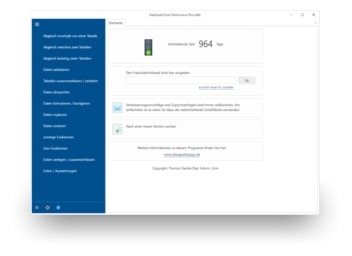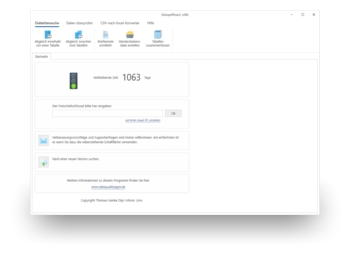To have long-term success with direct marketing campaigns, you have to know which factors are decisive for their success. To do so, you have to obtain as much information as possible about the effects of particular variations of advertising campaigns and measure their success.
In the article 'Test advertising campaigns with direct marketing', you can read about how to use test advertising campaigns to find out as much as possible about their success or failure. However, test advertising campaigns only make sense when you evaluate their success and failures systematically, record the results and use this information to optimise future direct marketing campaigns.
To be able to also get a good impression of a particular advertising campaign at a later time, it is important to start by recording everything that is characteristic for this particular advertising campaign:
- The advertised product(s).
- The number of dispatched sales letters.
- The target group.
- The address source.
- The composition of the sales letters.
- Who worked on the design of the sales letters?
- The dispatch date.
- Other information that is characteristic for a particular advertising campaign.
Furthermore, it doesn’t hurt to always hold on to one copy of each sales letters, to be able to look at it more closely later. For example, you could keep the copy received when you inserted a seed address among the solicited addresses. You can read more about seed addresses in the article 'Seed addresses'.
In order to evaluate the financial success of an advertising campaign, you also have to know how much it cost:
- The costs for address acquisition and preparation.
- The costs for the individual components of the sales letters, e.g., for the letter or the brochure.
- The costs for enveloping and delivery to a postal service.
- The postal charges.
- Other costs.
Of course it is possible that certain costs cannot be attributed directly or not completely to a particular advertising campaign, for example, when a CD with addresses was bought that is to be used for several advertising campaigns. In this case, you have to come up with a suitable allocation formula. In the examples mentioned above, you could assume that the CD will be used for all the advertising campaigns in that year, and that it will pay for itself within one year at the most. So if 10 advertising campaigns are planned in this one year, then 10% of the costs for the CD will be allocated to each advertising campaign.
Of course, you then compare the costs to the revenues. The following information is required for this purpose:
- The number of orders and/or inquiries.
- The number of returns, in the case where a customer sends back the ordered product.
- The sales volume generated by the advertising campaign.
- The sales volume of the returned orders.
In this way, you obtain several parameters that can be used to evaluate the success of an advertising campaign:
- The profits or losses of an advertising campaign: You have to subtract the total costs and the sales volume of the cancelled orders from the total sales volume that was generated by this advertising campaign. To be able to see if you actually made any profit with a particular advertising campaign, you can also deduct the wholesale price of the ordered products and a lump sum for the fixed operating costs from the sales volume.
- The returns rate: You divide the number of orders (minus the number of returns) by the number of dispatched sales letters. If you multiply this number by 100, you obtain a percent value, which will generally be of less than one percent.
- The costs per sales letter: You divide the total costs by the number of dispatched sales letters.
- The costs per order: You divide the total costs by the number of orders.
Of course, you can also calculate this value for every one of the advertised articles, whereby, in this case, you can only consider costs in the amount of the fraction of each article. For example, if a particular article was allocated 20% of the available surface area on the advertising letter, then you can also only attribute 20% of the total costs of this advertising campaign to that particular article.
The sales volume and the orders can also be assigned directly to the solicited addresses. In this case, in addition to measuring the success of the whole advertising campaign, you can also determine the success rate with certain recipients, for example, to filter out good or bad customers. If you made note of the selection criteria used for the addresses, then you can also determine which selection criterion was most successful. The same applies to the target region, which can be derived from the postal code. This evaluation could also be carried out for all the advertising campaigns that were ever made by your company.

